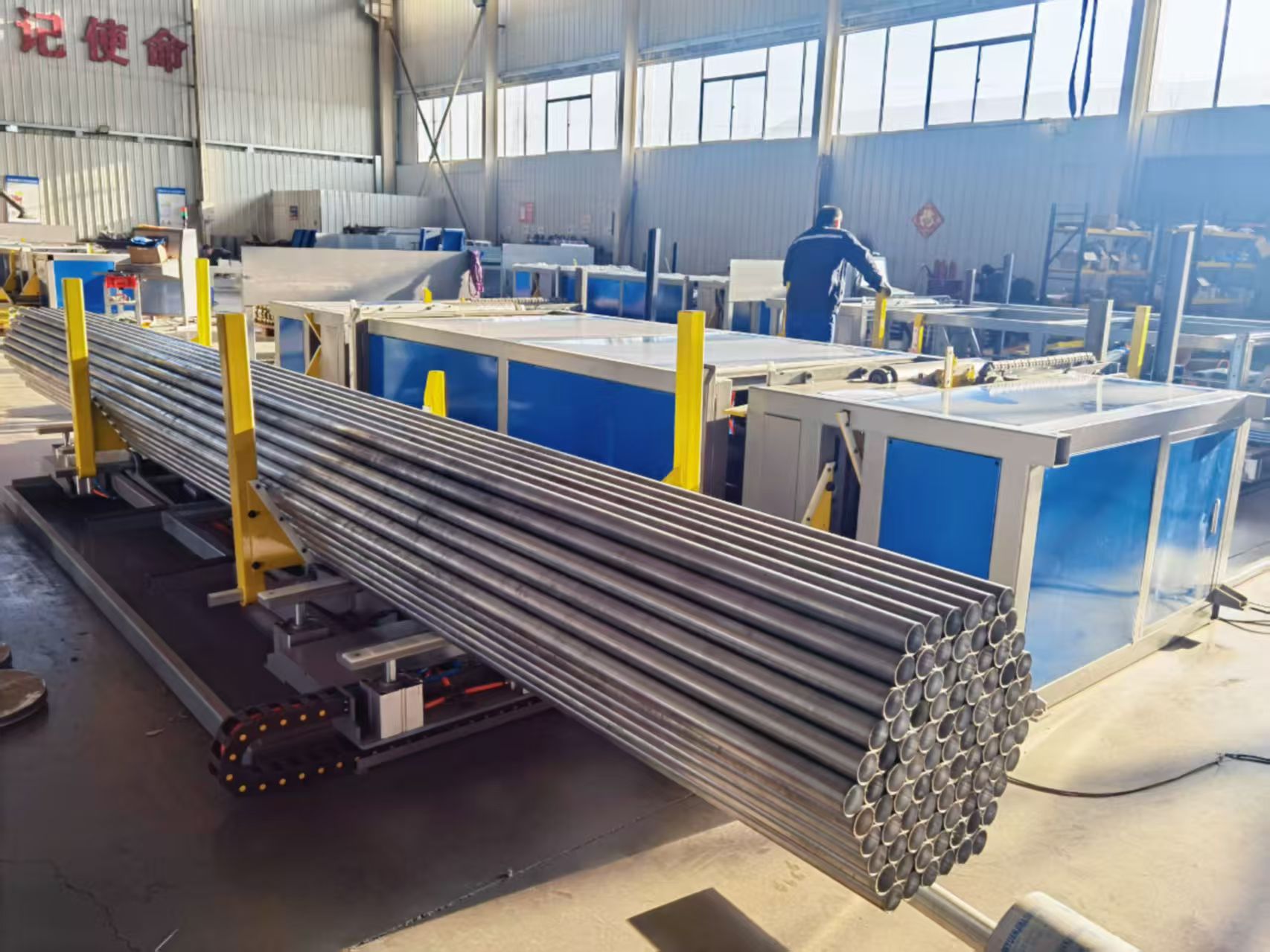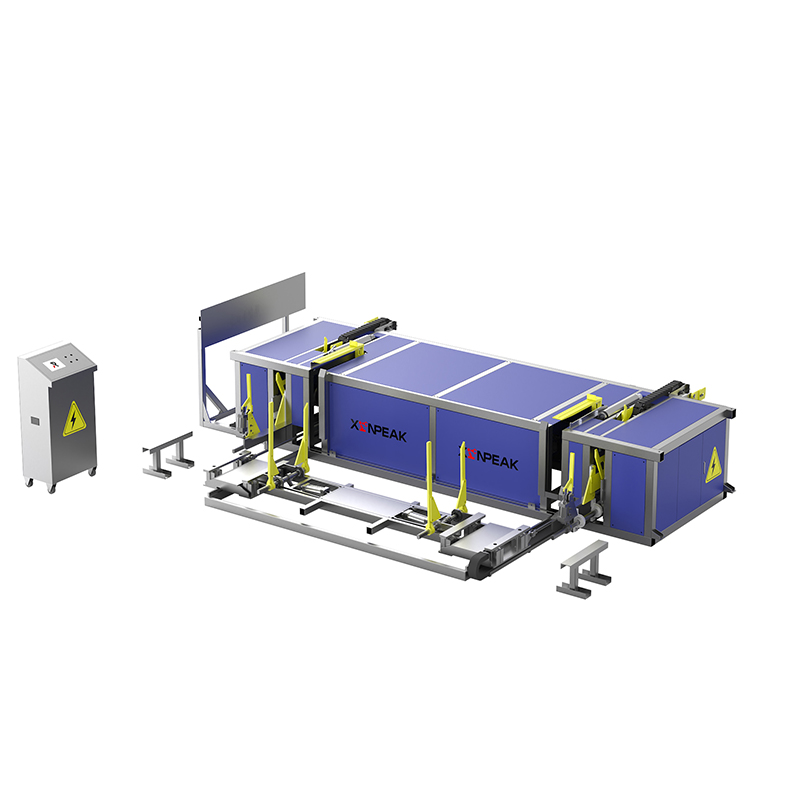Online
Steel pipe palletizer selection recommendations
2025-12-19
When selecting a steel pipe palletizer, you need to comprehensively consider multiple factors, including material properties, process requirements, equipment performance, space layout, cost budget, and after-sales service. The following are specific recommendations:
1. Clarify Material Properties and Palletizing Requirements
Material properties include the shape (e.g., round, square), size (diameter, length), weight, and surface treatment (e.g., galvanizing, painting) of the steel pipe. These properties directly influence the palletizer's gripping method, fixture design, and palletizing stability.
Palatizing Requirements: Determine the palletizing height, number of layers, arrangement (e.g., staggered, neat), and whether special features are required (e.g., labels facing outward, bag openings facing inward). These requirements will determine the palletizer's structural design and control system configuration.
2. Select the Appropriate Palletizer Type
Based on Material Properties: For round steel pipes, choose a palletizer with a rotation function to ensure stable palletizing. For square steel pipes, choose a gripper or clamping palletizer. Choose based on palletizing requirements:
Single-line single-pallet: Suitable for low-volume production with low palletizing requirements. Choose a column palletizer or coordinate palletizer.
Single-line dual-pallet or dual-line dual-pallet: Suitable for high-volume production with high palletizing requirements. Choose a robotic palletizer or high-level palletizer.
Special function requirements: If you require special features such as labels facing outward or bag openings facing inward, choose a customized palletizer with these features.
III. Evaluate Equipment Performance and Stability
Load Capacity: Select a palletizer with sufficient load capacity based on the weight of the steel pipes and the number of palletizing layers. Ensure the equipment is not damaged by overload during extended operation.
Palletizing Speed: Select a palletizer with an appropriate palletizing speed based on the production line's cycle time requirements. Ensure the equipment can meet production needs and avoid production bottlenecks.
Precision and Stability: Select a palletizer with high precision and stability to ensure neat and stable palletizing. Avoid problems such as tilting or falling pallets due to insufficient equipment precision or poor stability. Internal Configuration and Component Quality: Focus on the palletizer's internal configuration and component quality, such as motors, reducers, and sensors. Select components with reliable quality and stable performance to ensure long-term, stable operation.
4. Consider Space Layout and Floor Restrictions
Space Layout: Select a palletizer size and shape appropriate for the production workshop's spatial layout. Ensure the equipment can be installed smoothly and integrated into the existing production line.
Floor Restrictions: If the production workshop is located upstairs, consider factors such as floor height, floor load-bearing capacity, and how the palletizer will be moved upstairs. Avoid construction difficulties or safety hazards caused by excessive weight or size.
5. Overall Cost and Cost-Effectiveness
Equipment Price: Select a palletizer with a high cost-effectiveness within your budget. Avoid blindly pursuing high-end equipment without considering actual needs and economic efficiency.
Operating Cost: Consider the equipment's energy consumption, maintenance costs, and the cost of replacing wearing parts. Choose a palletizer with low operating costs and easy maintenance to reduce long-term costs.
Return on Investment: Comprehensively evaluate the equipment's purchase cost, operating costs, and the benefits of increased production efficiency. Choose a palletizer with a high return on investment to maximize your investment.
6. Focus on After-Sales Service and Technical Support
After-Sales Service: Choose a palletizer manufacturer that offers comprehensive after-sales service, including equipment warranty coverage, maintenance plans, and technical support. This ensures that any problems that arise during use are promptly resolved.
Technical Support: Focus on the manufacturer's technical support capabilities, including technical training, remote troubleshooting, and on-site repairs. Choose a manufacturer with strong technical support capabilities to ensure stable equipment operation and efficient production.
Contact Us
You can contact us through the following four methods. We will reply to your inquiry within 2-8 hours after receiving it!
Call Us
Send Email
Leave a Message
Add WeChat or WhatsApp







